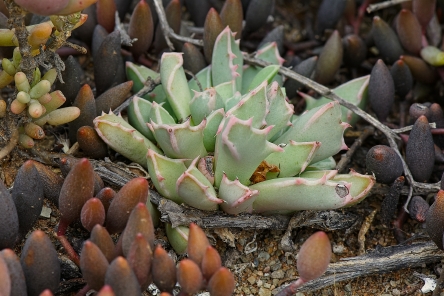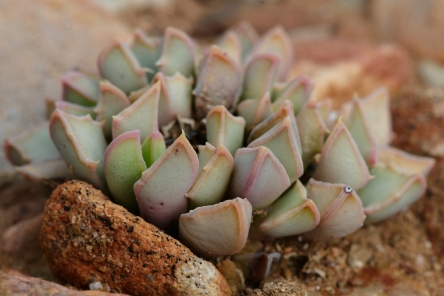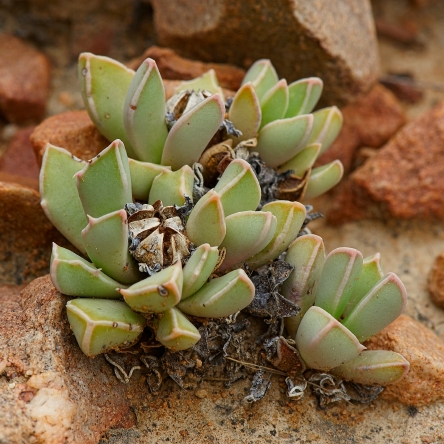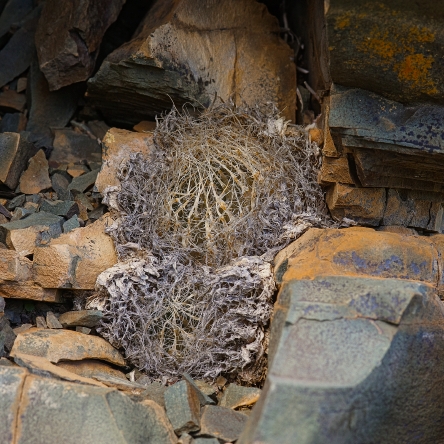Photographed 26 December 2012, east of Prince Albert. The species is easily recognizable because of the sharp and firm but flexible teeth together with the white margins and keel.
Month: April 2013
Haworthia decipiens var. decipiens
Today’s post is the first in what is intended to become a daily posting of one or more interesting and beautiful pictures (mainly) of succulent plants. The text will be kept to a minimum, so as not to distract from the images. These post will be an addition to, not a replacement for, the usual ones.
You may also notice that I have added a photo gallery to the blog. Enjoy!
We kick off with two pictures that are identical, except for the fact that one was taken with a diffusor. That one seemingly little difference produces quite a different result. One can not really say that one picture is better than the other, but they give different information and also evoke a different feeling. When the light is harsh like in this case, it is worth taking a couple of pictures with and without a diffusor or reflector.
Some Poellnitzia pictures
It keeps amazing me how sometimes you decide to do something and you end up with a totally different thing from what you had in mind. This post is a case in point.
I thought it would be a good idea to write a post on a certain aspect of plant photography that is often neglected (paralleling the subject) and went out into the garden to take some pictures to illustrate the principle. As it happened, there was a nice specimen of Poellnitzia in flower that seemed to fit the bill. Because the inflorescence in these plants is rather long and thin, even the gentle breeze that was blowing made it almost impossible to make a sharp picture. Quite a while ago I bought a gadget especially for occasions like this, where you have to stabilise something that is moving in the wind. It is called a Plamp (plant clamp) and has a couple of other uses as well. Although I rarely (have to) use it, it may make the difference between a good picture and a bad one (or none at all). Have a look at http://www.tripodhead.com/products/plamp-main.cfm for more info.
Even after the inflorescence as such had now been stabilised, the individual flowers were slightly moving in the wind. This defeated the object of showing the differences in depth of field as a result of different camera angles. After the rigmarole of setting up camera, tripod and Plamp, combined with the fact that a flowering plant of this species is not a common sight, I was rather reluctant to just pack up and leave. So I decided to have another look at what was there. As usual, I started with a couple of what my friend Neil Curry, a retired filmmaker, uses to call establishing shots, showing the subject in its environment.
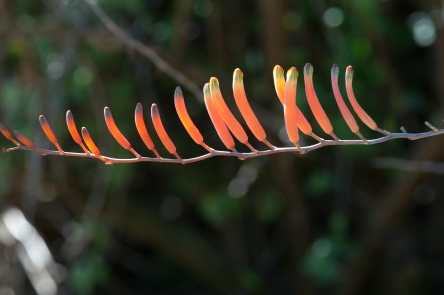
The background was nice and dark but because I did not compensate for its darkness this is how the picture turned out.
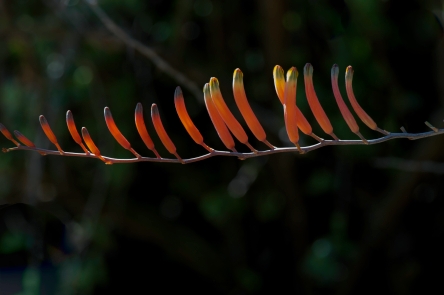
This is what it looked like after taking a second picture with one stop underexposure and some fiddling in post production. You will notice that I also removed some of the nasty light blotches in the background.
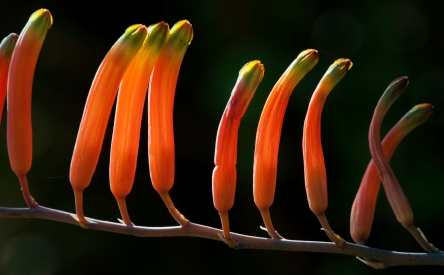
After this, I went somewhat closer up and photographed only the middle part of the inflorescence.
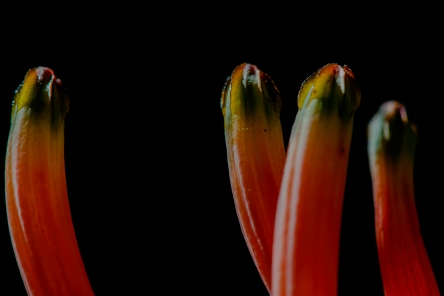
Because the tips of the flowers have a unique shape I decided to make a picture of those at natural size. The flowers are so special in fact, that a whole genus (Poellnitzia) was established to accommodate just one species (rubriflora).
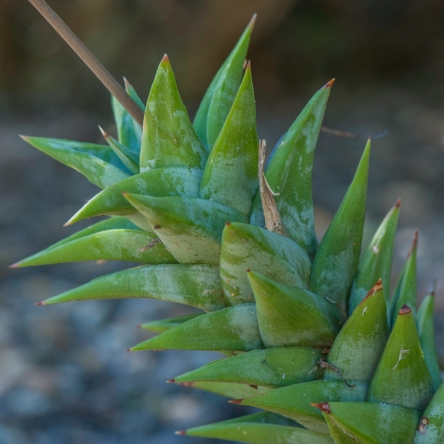
The plant itself is similar in shape to species in related genera (Aloe, Astroloba, Haworthia) but the colour is rather special.
